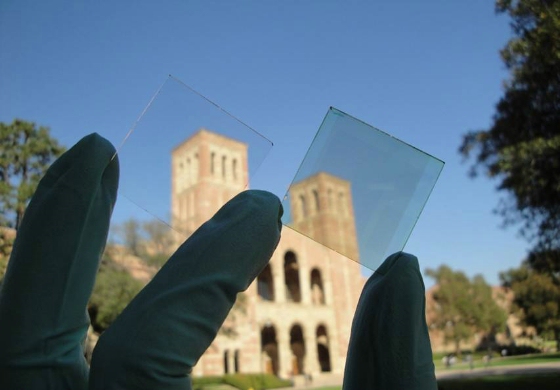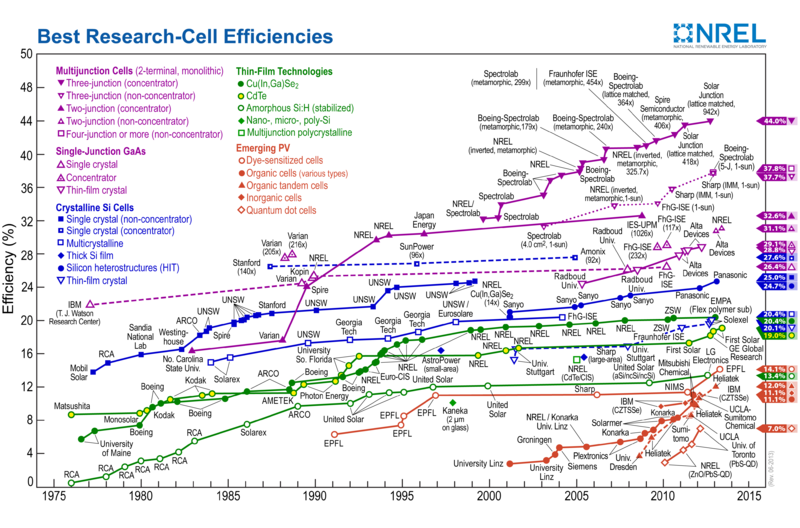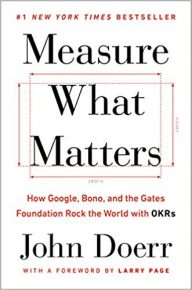Pitch your Startup, App or Hardware or post a Startup Event or Startup Job
Nearly doubling the efficiency of a breakthrough photovoltaic cell they created last year, UCLA researchers have developed a tandem-structure transparent organic photovoltaic (TOPV) device which is a two-layer, transparent solar film that could be placed on windows, sunroofs, smartphone displays and other surfaces to harvest energy from the sun.
Whilst the new cells only convert a small amount of energy compared to the leading technologies (7.3% vs 44%) their flexible transparent properties mean that they potentially could be applied to just about any glass surface as well as building walls, vehicle panels and other areas not suitable for normal rigid panels.
The new device is composed of two thin polymer solar cells that collect sunlight and convert it to power. It’s more efficient than previous version, because its two cells absorb more light than single-layer solar devices, because it uses light from a wider portion of the solar spectrum, and because it incorporates a layer of novel materials between the two cells to reduce energy loss.
Researchers led by Yang Yang, the Carol and Lawrence E. Tannas, Jr., Professor of Engineering at the UCLA Henry Samueli School of Engineering and Applied Science, said the new cells could serve as a power-generating layer on windows and smartphone displays without compromising users’ ability to see through the surface. The cells can be produced so that they appear light gray, green or brown, and so can blend with the color and design features of buildings and surfaces.
“Using two solar cells with the new interfacial materials in between produces close to two times the energy we originally observed,” said Yang, who is also director of the Nano Renewable Energy Center at the California NanoSystems Institute at UCLA. “We anticipate this device will offer new directions for solar cells, including the creation of solar windows on homes and office buildings.”
The tandem polymer solar cells are made of a photoactive plastic. A single-cell device absorbs only about 40 percent of the infrared light that passes through. The tandem device — which includes a cell composed of a new infrared-sensitive polymer developed by UCLA researchers — absorbs up to 80 percent of infrared light plus a small amount of visible light.
Chun-Chao Chen, a graduate student in the UCLA materials science and engineering department who is the paper’s primary author, said using transparent and semi-transparent cells together increases the device’s efficiency, and that the materials were processed at low temperatures, making them relatively easy to manufacture.
Other authors of the study were Gang Li, a staff researcher in the materials science and engineering department at UCLA; Jing Gao, a materials science and engineering graduate student; and Letian Dou and Wei-Hsuan Chang, graduate students in the UCLA materials science and engineering department and the California NanoSystems Institute.
The research was funded by the Air Force Office of Scientific Research, the Office of Naval Research and EFL Tech.
The UCLA Henry Samueli School of Engineering and Applied Science, established in 1945, offers 28 academic and professional degree programs and has an enrollment of more than 5,000 students. The school’s distinguished faculty are leading research to address many of the critical challenges of the 21st century, including renewable energy, clean water, health care, wireless sensing and networking, and cybersecurity. Ranked among the top 10 engineering schools at public universities nationwide, the school is home to eight multimillion-dollar interdisciplinary research centers in wireless sensor systems, wireless health, nanoelectronics, nanomedicine, renewable energy, customized computing, the smart grid, and the Internet, all funded by federal and private agencies and individual donors.
Related articles
Pitch your Startup, App or Hardware or post a Startup Event or Startup Job










